
When we hear the word “harmonica”, we immediately think of the classical diatonic with ten holes and twenty reeds, with which you can play wonderful blues licks and killer train imitations. This type of harmonica is almost always used for solo parts, more rarely to accompany, mainly because of the extension of the notes it presents. But what if we wanted an instrument to play the rhythmic section of an ensemble band? This is where the bass harmonica comes in. So, what is a bass harmonica? What are the differences between the classical harmonicas and how are they played? I’ll explain everything in this tutorial.
BASS HARMONICA INDEX
The bass harmonica and the ensemble instruments.
The bass harmonica note extension: what notes can we play on it?
Where are the notes on a bass harmonica located?
How do you play a bass harmonica?
Which bass harmonica models can I buy today?
How much does a bass harmonica cost?
A bass harmonica is part of the ensemble musical family – a set of instruments with different extensions and timbres – which are played by different musicians to create a complete musical piece. To give you an example, a classical ensemble can contain anywhere from six to dozens of different elements – for example, an orchestra, but also a small, simple jazz ensemble. What does the bass harmonica have to do with the ensemble? The fundamental concept to understand is that in an ensemble, different instruments occupy a different musical range (the notes and frequencies that are played). For instance, a double bass plays the low notes, while a violin can perform much more acute and shrill melodies. There are instruments that have a larger extension and others that can emit fewer notes. The important point is that each instrument has its place within the orchestra.
Bass instruments, such as the bass harmonica, are those that mainly play the function of supporting the rhythmic section – that is, the set of instruments that determines the progression of the song with a certain speed and underlining of accents. In the rhythmic section, we find percussions and bass. To help you understand this concept more clearly, take for example a band consisting of drums, bass, piano, and saxophone. The rhythmic section will be comprised of the drums and bass, the piano can play both a role in the rhythmic section and a solo role, while the saxophone will definitely contribute to the lead part.
The purpose of each instrument can be more or less outlined, and in the case of a bass harmonica, we can play some really articulated and punchy bass lines. To get to play it well and produce a nice sound, the technique must be learned, and this differs from that of a normal diatonic harmonica.
What other harmonicas do we find in the family of ensembles? In addition to the bass harmonica, we can have the chord harmonica, which is useful for playing many types of chords, and performs both the function of rhythm accompaniment and pads, as the string instruments or some sections of wind instruments usually do. An example of this type of harmonica is the Hohner chord 48.
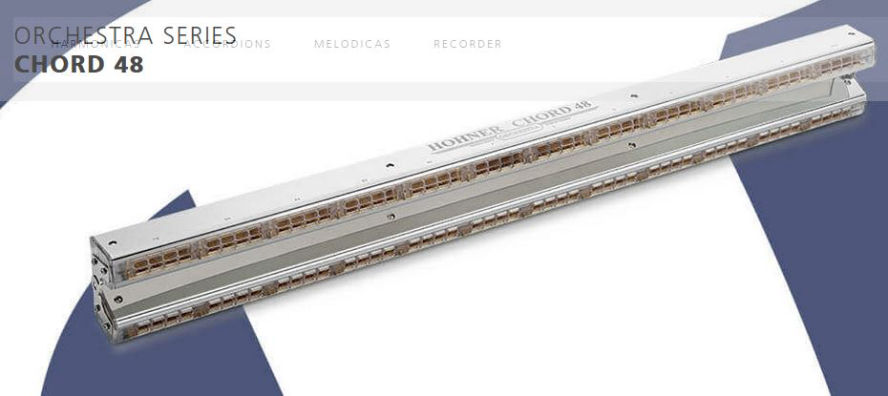
In the following video, you can listen to the Hohner Chord 48.
Among the other orchestra instruments, we can also buy an alto harmonica, a soprano, and a baritone, as well as a double bass. The double bass harmonica has a more complex construction, as well as a more challenging size and weight.
The notes on a double bass harmonica are positioned in a chromatic fashion. Basically, this gadget is made of two harmonicas stacked one on top of the other. For example, on the Bass 58, we find the notes E, F, G, A, and B on the bottom holes, then on the new octave C, D, E, F, G, A, B, and then again C, D and E. On the top of the instrument, we have the notes F, F#, G#, A#, B, C#, and D#; this sequence is repeated one octave higher for the rest of the holes.
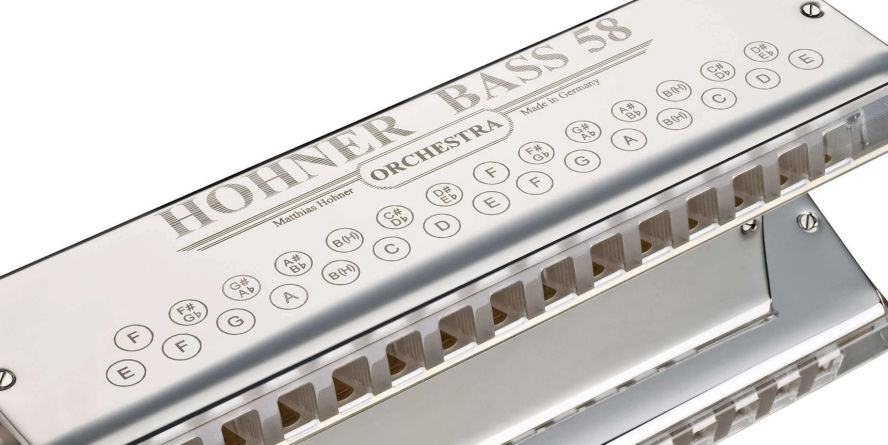
As you can see in the previous image, on the same row of holes, some notes are only one semitone apart, while others have a distance of two semitones. To learn how to play a harmonica of this type, you need to train to locate each note on the fly, as is the case whenever we play any type of harmonica that has a non-standard tuning.
Let’s now look at the Suzuki SDB-29. This bass harmonica has a slightly different layout of notes than the previous one. In the upper row, instead of the note B, we find the note C. This slight difference makes it easier to play some passages and harder to play others. However, the harmonica is not as large and players can adapt to it quite easily.
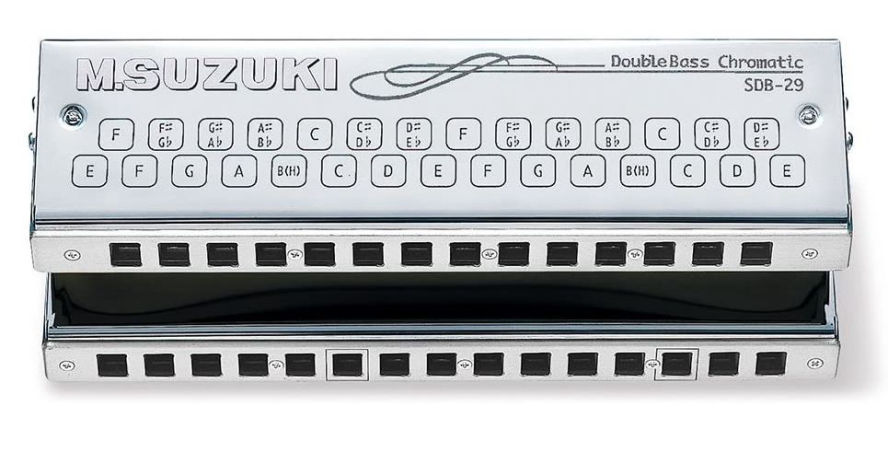
Among the bass harmonicas, we also have some more compact models, with fewer notes but that are fun to play – for example, the Tombo Pocket Bass harmonica, model 1160. Even this harmonica is played by blowing into the holes, and you can play on it using only ten notes. On the bottom row, we find D, A, E, C, and F#, while on the top, we have the notes F, C, G, D, and A. Although the extension of this bass harmonica is small, you can perform some decent bass lines to support the rhythmic section.
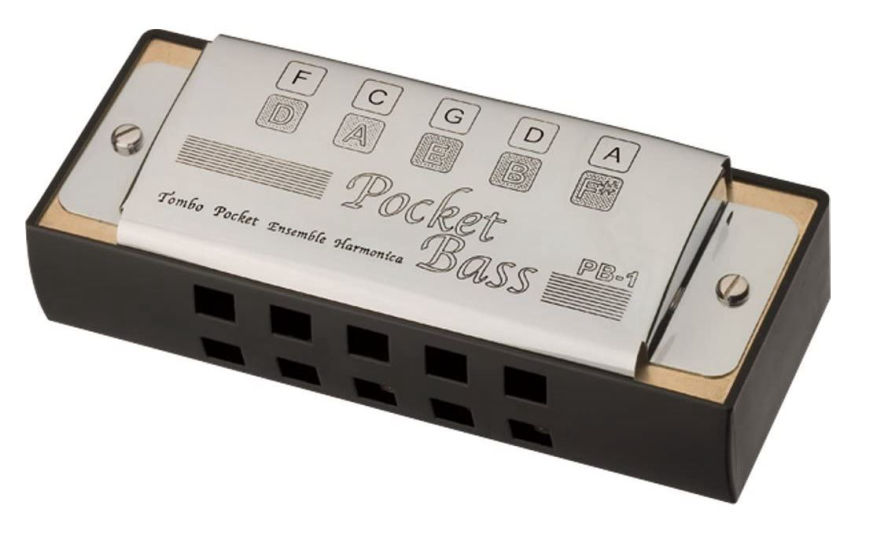
There’s also a mini bass harmonica from Easttop that has a different note sequence: on the bottom are the notes G, D, A, E, B, and F#, while on the top row we have the notes Bb, F, C, G, D, and A. As you can see, each instrument has a specific layout of notes, so if you decide to play different ones, you will have to learn different sequences – some interesting memorization work!

First, we need to clarify that depending on the model we buy, the technique changes, as the layout of the notes can be different as well as the shape and weight of the instrument. Mostly, playing a bass harmonica requires more effort in terms of movement due to the generous size of the instrument. Regarding the amount of air needed to vibrate the reeds, many think that it’s necessary to blow extremely hard. However, the reality is quite different: it’s certainly not like playing a normal diatonic harmonica, but with practice, you can learn to economize on the amount of breath you use. Often, to start vibrating the reeds, you need to emit a sound in your throat like when you cough. With practice, you can also learn to apply some cool effects on the sound you emit.
The main difference between this type of instrument and a common harmonica is that it is played only by blowing into the holes. Often, as in the case of the Hohner or Suzuki double bass harmonicas, there are two reeds in each hole that vibrate together, producing a deep, rich, and projected sound.
From the point of view of musical performance, playing a bass harmonica means working mainly on the rhythm, so to learn it, it’s definitely useful to listen to other instruments of this type such as the electric bass guitar or the double bass. Listening to how these instruments are played is a great way to acquire new ideas; when you play an instrument in the rhythmic section, you often use a few notes and work more on the rhythm and their execution. Other times, more complex but repetitive melodic lines are created, as in the case of the 'walking bass'. In a few cases, solos are performed with melodies that span the entire extension of the instrument.
While the role of a bass is hardly ever solo, its importance in an ensemble remains high, as it contributes to the very foundation or backbone of the structure of the songs. Try removing the bass from any song and you’ll see that everything else becomes much more subtle, even insignificant.
You can listen to how a double bass harmonica sounds in the following video:
What are the most popular bass harmonica models on the market?
As seen above, the major manufacturers of harmonicas also produce harmonicas for ensembles as well as bass harmonicas. Among these, the Hohner stands out with the Bass 58 and Bass 78 models, which are to all intents and purposes double bass instruments. Then we find the Suzuki SDB-29, which is very similar to the Hohner Bass 58 but differs slightly in the layout of the notes. Lower-end instruments include the Swan 29 WBS. As for smaller bass harmonics, the Tombo pocket bass harmonica and the Easttop mini bass are similar and quite popular.
Buying a bass harmonica is not like buying a diatonic harmonica, as the investment is definitely greater. Cheap models like the Swan are around $180, while for a mini model like that of the Easttop, the price is about $120. The Tombo pocket bass costs about $140.
As far as professional instruments are concerned, the prices change considerably. A Suzuki SDB-29 costs about $700, while her bigger sister, the SDB-39, costs over $1100. You can also buy a microphone specially built for the Suzuki’s amplification, and which is suitable for the larger SDB-39 harmonica model.
Today, you can still find some very old models of the bass harmonica, such as the two models pictured below. These tools are nice to collect but may present several operating problems, and sometimes require important maintenance to get back into working order. Have a look at ebay.
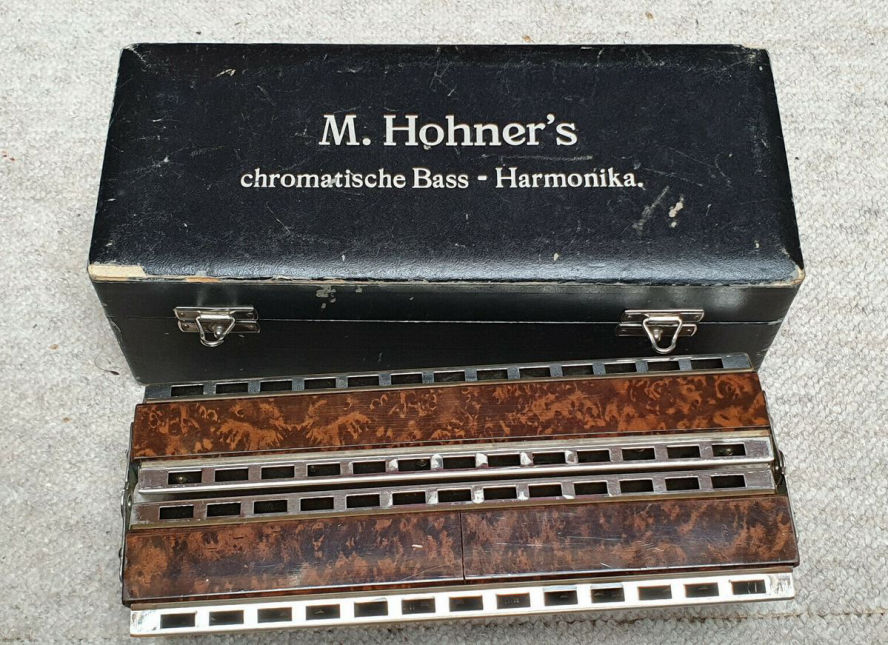
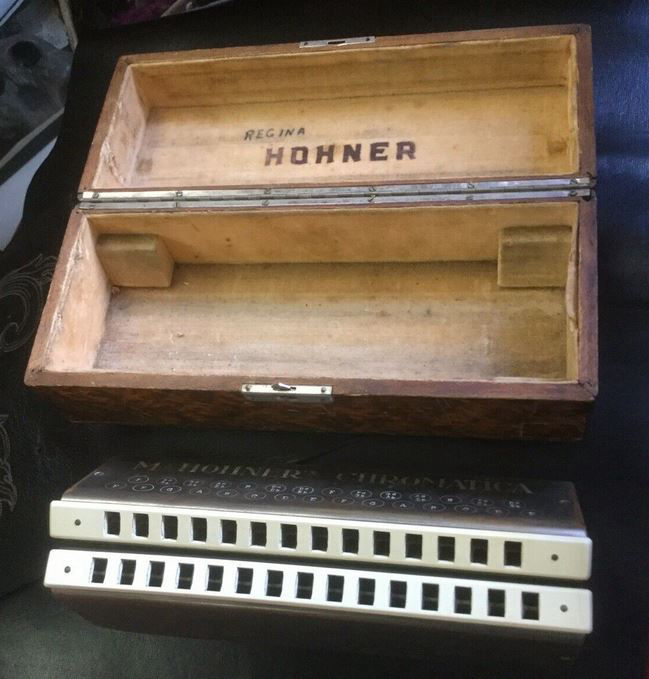
The last category of bass harmonica I want to talk about is produced by Brendan Power, an expert harmonica maker who has developed numerous custom harmonicas over the years, experimenting and creating tools that can facilitate, for example, the execution of 'overbending’. Among his creations, we can also find the Slider for bass harmonicas. This is the description you can find on the page of Power’s official website:
“Based on my patent-pending TwinHarmonica System, I have scaled up the design to fit existing bass harmonicas of the traditional type. Now, instead of having to jump awkwardly between two separate units as in the past, the player can stay on one comfortable rounded mouthpiece and get all chromatic notes via a sprung slider, just like a normal chromatic harmonica. Aside from the advantages in comfort, speed and accuracy, it offers bass harp players new techniques never possible before – like legato semitone playing, slider trills and more!” Take a look at this harmonica in the following video.
How did you like the idea of a slider for the bass harmonica? I personally find it very player-friendly, and recommend that you take a look at the page on Brendan Powers’ official website.
This ends our immersion into the interesting world of low-pitched harmonicas. I hope you enjoyed reading and that you share it with your friends – maybe someone will be interested in trying out one of these great instruments! See you next time.
Share this page with your friends!